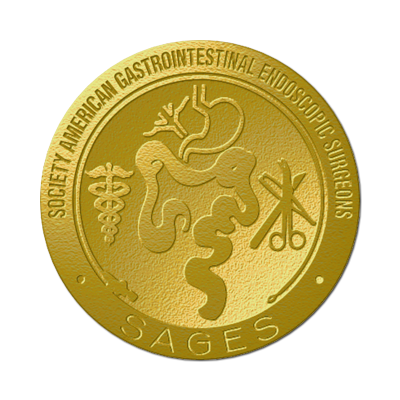Register now for the 2025 Challenge or reach out to sagescvschallenge2025@gmail.com with any questions!
Motivation for the SAGES CVS Challenge
presented by former SAGES President Dr. Michael Brunt, MD.
What is the CVS Challenge?
The Critical View of Safety Challenge is a biomedical data challenge organized by a consortium of surgeons and computer scientists on behalf of the Society of American Gastrointestinal and Endoscopic Surgeons (SAGES). The challenge aims to foster the development of AI solutions for computational assessment of the Critical View of Safety (CVS) in Laparoscopic Cholecystectomy videos.
The CVS - one of the most meaningful, clinically validated, surgical safety measures - consists of three visually distinct criteria to be achieved throughout the procedure. Numerous AI models have been proposed to improve the safety of laparoscopic cholecystectomy by academic groups as well as MedTech companies. While these algorithms generally show promising results, thorough testing on large, diverse and representative datasets is necessary to better assess real-world performance and build trust prior to clinical translation. To this end, the SAGES CVS challenge is conducted using a uniquely large and diverse dataset of 1000 laparoscopic cholecystectomy videos from across the globe, meticulously annotated by clinical experts for the development of AI algorithms targeting CVS assessment.
The first edition of the CVS Challenge with 13 participating teams was hosted at the Conference on Medical Image Computing and Computer Assisted Interventions (MICCAI) 2024 in Marrakesh. Teams were evaluated on multiple sub-challenges focused on accuracy, robustness to unseen clinical data distributions, and uncertainty quantification. The detailed results will be available in the form of scientific publications soon.
Given the success of the 2024 edition of the challenge, we have been highlighted as a Lighthouse Challenge at MICCAI 2025 in Daejeon, South Korea. The SAGES CVS Lighthouse challenge adds additional sub-challenges for hepatocystic anatomy segmentation and computational efficiency, to encourage solutions that are trustworthy and applicable to low-resource settings. For more information about the CVS Lighthouse Challenge at MICCAI 2025 click here.
About the Critical View of Safety
Laparoscopic cholecystectomy is one of the most frequently performed, highly standardized surgical procedures worldwide, to remove the gallbladder in case of inflammation or other pathologies. The Critical View of Safety (CVS) is an internationally recognized, clinically validated, intraoperative surgical safety measure during laparoscopic cholecystectomy. The CVS was first introduced by Dr. Steven Strasberg in 1995 to help prevent bile duct injuries, one of the most severe complications of laparoscopic cholecystectomy. The CVS is achieved by isolating three visually distinct anatomic structures, reflected by three CVS criteria (C1, C2 and C3), before proceeding to remove the gallbladder. The optical assessment and differentiation of these three anatomic structures can be deceiving. Therefore AI-driven automated assessment of the CVS criteria can enhance surgeons perception, decrease their cognitive workload, and improve surgical safety.
-
The cystic duct and artery should be separated from other structures, with only their lower part still attached to the gallbladder. This ensures that the surgeon can clearly identify and dissect the correct structures.
-
The hepatocystic triangle is the area bordered by the common hepatic duct, the cystic duct, and the liver. Surgeons must adequately expose and clear this area of surrounding fat and connective tissue to visualize the essential structures accurately.
-
The lower part of the gallbladder must be separated from the liver bed, making the gallbladder-liver interface clearly visible. This ensures that the cystic duct and artery are the only structures connecting the gallbladder to the liver and other organs.
Two structures ✔️ + Hepatocystic Triangle ✔️ + Cystic Plate ✔️ = The Critical View of Safety ✅ ...............................................................
Two structures ✔️ + Hepatocystic Triangle ✔️ + Cystic Plate ✔️ = The Critical View of Safety ✅ ...............................................................

